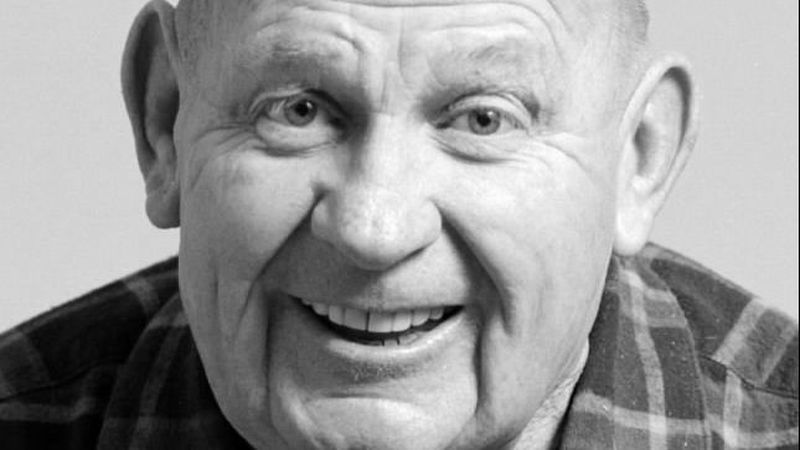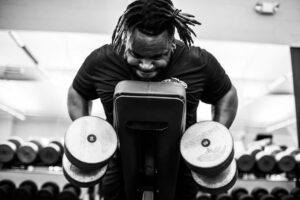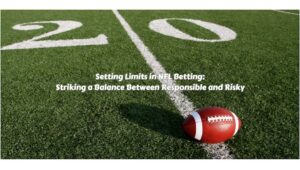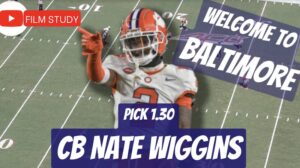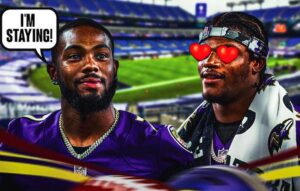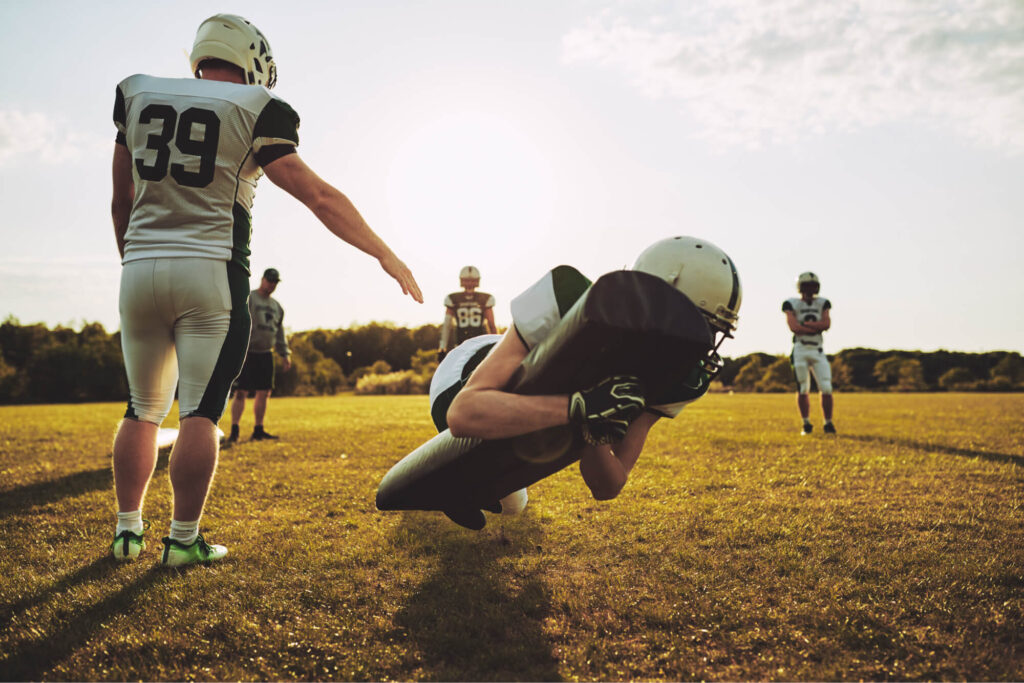As Ravens’ owner Steve Bisciotti said, “ Baltimore has lost a friend”, and that is exactly the way Art Donovan made those in his presence feel – like a friend.
He was the quintessential blue-collar sports hero that Baltimore so willingly embraces – down to earth and one of us.
It seems just about everyone can quote a story or a line from a story Artie told about his playing days or his off the field antics, but because he was so approachable and charismatic, it is easy to forget or even realize that he was one of the best defensive tackles to ever play the game.
And when I say defensive, I mean exactly that!
During Artie’s heyday, players of his stature often played offense and defense. Not Donovan! In all of his 138 career games in the NFL Artie was strictly a defensive tackle.
As the NFL began to evolve into two-platoon football, Donovan was one of the first defensive only tackles, and his attention to this paved the way to his Hall of Fame induction in 1968, the first Baltimore Colt in enshrined in Canton. Yet if you look back upon on his early career, getting to the Pro Football Hall Of Fame would have seemed an impossible dream.
After serving his country in World War II, Donovan enrolled at Boston College and had what he called “the greatest time of my life. That ended after 1949 when Donovan was drafted by the lowly Baltimore Colts, who were moved from the defunct All America Football Conference to the NFL.
The 1949 Colts were 1-11 in an inferior AAFC, so their 1-11 1950 NFL record was no surprise. But Artie proudly made $4,500.00 by signing his first pro contract at the age of 26. They set dubious defensive records that still stand today, allowing 38.5 points a game. The fun loving Donovan along with the rest of the Colts’ “defense” were pushed around like they were on roller skates. At this point Donovan had not developed his craft and wasn’t yet the refined technician that would carry him into Canton.
After the Colts went bankrupt Donovan was traded to the New York Football Yankees in 1951. Things improved slightly from 1-11 to 1-9-2. The Yanks surrendered about a touchdown less per game but Artie was still targeted by opposing offenses, viewed as an easy target to move off the ball.
The Yankees went under after 1951 and the team was transferred to Dallas and named the Texans. After 4 games the Texans’ owners turned the team back over to the league and they too went belly up after finishing the season as a road team based in Hershey, PA. The team’s only win during a 1-11 season was a 27-23 victory over the Bears in Akron, Ohio before a “crowd” of 3,000 on Thanksgiving. Texans practices consisted of Jim Phelan having the team play volleyball using the goalpost as the volleyball net.
After three years and three cities, Art’s pro record was 3-31-2, and while taking up space, his natural talent of having speed for a big man was not being used.
The Texans were moved to Baltimore after the city sold 15,000 season tickets and once again they adopted the name of Colts for the 1953 season. Former Bear great Keith Molesworth was made head coach and their record improved to 3-9. Financial stability was provided by a new ownership group headed by Carroll Rosenbloom.
Stability also made its way to the defensive tackle position manned by Donovan. His quickness and ability to make tackles in the backfield caught the eye of sportswriters, particularly Sports Illustrated’s Tex Maule. After the season Donovan would be elected to the first of his 5 Pro Bowls.
In 1954 Donovan’s football world changed when Molesworth was replaced by Browns’ assistant coach Weeb Ewbank who brought with him line coach Joe Thomas – the same Joe Thomas who would become the Colts GM in 1972 and sold John Unitas to San Diego.
Ewbank and Thomas installed the Cleveland read and react defense. Instead of Art just using his strength to bull his way around, he was taught to read the offense and pursue. The approach played right into Artie’s strengths. His speed was now a weapon and he became a force on defense.
The 1954 Colts had the same 3-9 record but the defense allowed a touchdown less a game. Art was elected first team All Pro and was sent to another Pro Bowl. Contributing to Art’s success was a brilliant tactical move by Ewbank who converted Gino Marchetti from offensive guard to left defensive end and played alongside Artie. Also arriving in 1954 was DE Don Joyce, linebacker Bill Pellington from Rutgers, and DB Carl Taseff. Bert Rechichar was elevated from special teams to starting free safety. These six would grow together and win a championship in 4 years.
In 1957 the defense added LB Don Shinnick along with DB’s Milt Davis and Andy Nelson. Gene “Big Daddy” Lipscomb was picked up from the Rams to partner with Artie to complete the best front four in football.
Coach Ewbank and GM Don Kellett built their defense on speed, although Art was nicknamed “Fatso” his quickness off the snap matched with Marchetti’s made running at or away from the Baltimore left side impossible.
Shortly thereafter the Colts strengthened their offense by adding RB Alan Ameche, WR Raymond Berry, offensive tackle Jim Parker, versatile halfback flanker Lenny Moore and sandlot quarterback John Unitas. By 1958 the Colts were the team to beat in the NFL.
The Colts did not disappoint, winning World Championships in 1958 and 1959 led of course by Unitas but fully supported by the fastest and best defense in football, anchored by Donovan and Marchetti.
The Colts lost their last three games in 1960 and missed the playoffs and by 1961 a knee I injury slowed the 35-year-old Donovan. Even though Artie was nearing the November of his career, the league’s best QB’s, Norm Van Brocklin, Bobby Layne, Y.A. Tittle, Bart Starr and others were all very aware that to beat the Colts you avoided the left of the Baltimore defense.
At the start of training camp 1962, GM Kellett wanted to work in some new players and out of respect for Donovan’s contribution to building the club from laughing stock to champion, offered him the opportunity to retire instead of being released. Artie accepted the invitation.
Art Donovan, a willing pupil to the teachings of Ewbank and Thomas, left an indelible mark on the game. He was the first powerfully built defensive tackle to use his quickness to get to the ball carrier and quarterback. And he did it better than anyone of his era.
In 1969 to celebrate the NFL’s first 50 years, the Hall of Fame chose an All Star for each decade and then the first All-Time 50 year team. Artie, Leo Nomellini of the 49ers and the Steelers Ernie Stautner were picked as the defensive tackles for the all 1950’s team.
For the All-Time team, the Hall chose just one defensive tackle and one defensive end. Nomellini got the nod at tackle while Artie finished second. Gino Marchetti was selected at end.
Artie and Gino played off each other and even after all these years they and the combination of Deacon Jones and Merlin Olsen of the Rams are the overwhelming choices for greatest left defensive tackle-left defensive end in NFL history.
His induction in 1968 in Canton was a forgone conclusion when he hung up his cleats in 1962.
Donovan proved a big tackle could move and pressure. He was a pioneer at the position, paving the way for highly accomplished successors such as Joe Greene, Bob Lilly, Merlin Olsen, Alan Page, Randy White, Curly Culp, and Warren Sapp – all Hall of Fame defensive tackles.
Undoubtedly Artie will be remember for his incomparable charisma, sense of humor, self-deprecating and selfless ways. He was our friend first but let us not forget that the one and only Arthur James Donovan Jr., was an outstanding football player and the very first Hall of Famer to represent Baltimore.
You enriched our lives in so many ways Artie.
Rest in peace.

